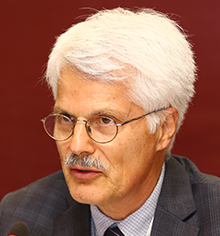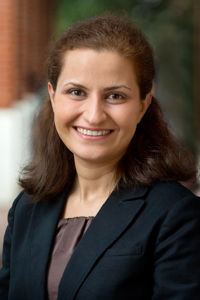In a nutshell
While women’s lives in MENA countries have changed significantly in recent decades in terms of declining fertility and rising education, there is little corresponding change in their participation in market work.
Education affects the time use of married women in significant ways: they spend more time on their children’s education compared with less educated women; and they work less at home and more in the market.
The gender gaps in time spent in market work and domestic work narrow moving from illiterate married men and women to those with a college education
Three markers of economic development and modernisation have historically occurred together: declining fertility; rising education of girls; and an increase in women’s participation in market work. But in the Middle East and North Africa (MENA), these transitions do not seem to be synchronised: while women’s lives in MENA countries have changed significantly in recent decades in terms of declining fertility and rising education, there is little corresponding change in their participation in market work.
Along with the inequality puzzle, this is another MENA puzzle with which social science needs to grapple. A 2004 World Bank report referred to it as the ‘MENA gender paradox’: if women in the region spend less time in childbearing and are more qualified for market work, why are their labour force participation rates less than a quarter of men’s?
Take Iran, for example, where the puzzle is most glaring. Fertility dropped like a rock in the 1990s, and it is now almost below replacement. And on average, women acquire more schooling than men, but their participation in market work remains under 20%.
This puzzle is on the one hand about the social returns to women’s education and on the other about how educated women spend the time freed from childbearing and child rearing on other things. Do they consume more leisure or are they doing something equally productive at home, such as investing in their children’s human capital.
To throw light on the puzzle, time-use data are essential. Unfortunately, such data are rare for MENA countries, especially over the span of time in which women’s time use appears to have changed – the last two to three decades. But even a single cross-section of time-use data can throw light on this question.
In research supported by the ERF and recently published in the Review of Economics of the Household, we employ time-use data from Iran for 2009 to find out how education affects the time use of married Iranian women. Specifically, we ask if educated women spend more time at home in educating their children.
We focus on time devoted to children’s education because it addresses an issue that conservative politicians raise in Iran every now and then: why should the state subsidise the higher education of women who outnumber men in public universities but end up not working?
We focus on married women because, again as in the rest of MENA, marriage further reduces women’s labour force participation. In 2016, only 15% of married Iranian women aged 25-44 participated in market work compared with 40% of unmarried women.
Our main finding is that education does affect the time use of married women in significant ways. To answer the main question we pose, they spend more time on their children’s education compared with less educated women. Women with post-secondary education (associate and college degrees) spend about twice as much time in child education as the least educated women: 0.39 hours compared with 0.20 hours per day.
They also work less at home in general and work more in the market. Prime-age women (those aged 25-54) with a college education spend 1.2 fewer hours per day in domestic work and 1.9 hours more in market work than women with less than a high school education.
The amount of time they devote to their children’s education turns out to be too small to explain the puzzle of ‘missing time’. To explain the puzzle fully, we need to be able to go back in time and compare time use before and after the fertility transition, which existing data do not permit.
The fact that educated women spend more time on their children’s education provides evidence for something that most Iranian parents know already and which Larry Summers has written about: that investment in the education of girls may well have the highest return.
As we note in our study, responding to conservatives who asked why scarce university slots should go to women who rarely use that education in the market, the late Iranian president Hashemi Rafsanjani said: ‘an educated but jobless mother plays an important role in the society because she raises more educated children.’
This is not a phenomenon limited to Iran; it has been confirmed in studies of time use in other countries. In many other ways too, Iranian women fit the pattern of time use observed around the world, though, as you might expect, the gender division of time between home and the market is more pronounced.
Prime-age men spend ten times as much time in the market as prime-age women: 6.6 hours per day on average compared with 0.69 hours. Women, on the other hand, bear the bulk of the weight in house work (domestic work plus care for other members of the household): 6.5 hours compared with 1.3 hours for men.
Significantly, the gender gap in market work narrows with education (from 5.7 hours for illiterate married men and women to 4.2 hours per day for those with a college education). The gap in domestic work also narrows as we move from those who are illiterate to those with a college education: from 5.2 hours to 3.9 hours.
The gap in total work – that is, market work plus house work – differs from the international norm, and seems to reflect the oil hypothesis of Michael Ross (2008). In his recent book, Daniel Hamermesh notes that the general perception is that women engage in more total work than men, although in reality they work about the same.
But in Iran in 2009, married women not in school worked slightly less than men (7.2 hours compared with 7.9 hours per day), though the gap diminishes with education: from 1.4 hours in favour of women (women working less) for illiterate women to only 0.36 hours per day for men and women with a college education.
This is a kind of return on education for women: marrying men who help around the house. It is also a sign that in Iran, education is doing for modernity what it has not done for the market work of women.



